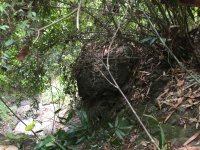LadyDigger
Bronze Member
Re: Searching for Roanoke's lost colony
Will do....hope they let me take pics....I think once I tell them my hubby's artifacts are on display also, they might let me....hehehehe
But I will post pics, if I am able...(I can always turn off the flash too!)
Will do....hope they let me take pics....I think once I tell them my hubby's artifacts are on display also, they might let me....hehehehe

But I will post pics, if I am able...(I can always turn off the flash too!)





